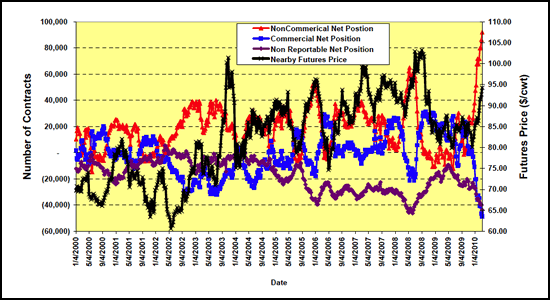Fig. 1: Live cattle commitment of traders, futures only, January 2000-March 2010

Darrell Mark
In the Cattle Markets
Non-commercials are heavily long.
The Commodity Futures Trading Commission (CFTC) was formed in 1974 as an independent agency to regulate U.S. futures markets and to, among other things, foster open, competitive and financially sound futures markets. As part of its mission, each week the CFTC issues its "Commitment of Traders (COT)" Report that provides detail as to which traders are holding long or short positions in a particular market.
The report categorizes traders as either Non-Commercials, Commercials, or Non-Reportable Positions (supplemental COT Reports provide further breakdown of these categories, including Index Traders). Commercials are considered hedgers — those who have cash market positions and are trading futures to offset their cash price risk. Non-Commercials, on the other hand, don't have cash market positions and are trading as speculators. Non-Reportable Positions, also called "Small Traders," can include either hedgers or speculators but trade a small enough number of contracts (generally less than 200) that they are not required to report their positions.
As of last week (March 8-12), Commercials were long 121,491 contracts and were short 169,980 contracts, for a net short position of 48,489. Non-Commercials, however, were net long 92,074 contracts (they were long 122,363 contracts and were short 30,289 contracts). Fig. 1 shows that this is the largest net long position Non-Commercials have had in the last 11 years. Commercials and Small Traders, conversely, have about the largest net short position they've ever had.
Thinking more about who these traders are can yield some insight into what causes them to take the positions they do. Non-Commercial traders are the large speculators who often use mathematical models and technical signals to guide their trading. Commercials, on the other hand, tend to be most knowledgeable about the underlying fundamentals (supply and demand) of the commodity because they have cash market positions. Of course, there are exceptions to these, but it generally holds true for the aggregate market.
Because trading many technical signals often results in following the current trend of the market, Non-Commercials tend to build their largest net long positions in an up-trending market and their largest net short positions in a down-trending market. They also tend to immediately reverse their positions when the price changes direction. Thus, Non-Commercials will often have their largest long positions when prices are their highest, and vice versa. Study the relationship between the red and black lines in Fig. 1 to see these trends illustrated.
The relationship between the blue and black lines in Fig. 1 is different. Commercial traders typically are scale-up sellers in up-trending markets and scale-down buyers in down-trending markets. Thus, they typically are short before the top in a bull market and long before the bottom in a bear market in anticipation of a changing market direction. Note that in Fig. 1, following several of the times when Commercials are net short, price declines.
With that background, the current situation with Commercials being heavy short and Non-Commercials being heavy long seems to suggest the market may be due for a correction. The $14-per-hundredweight (cwt.) increase in nearby futures prices since the beginning of December appears to have generated scale-up selling by the Commercials, suggesting that this group of traders believes fundamental forces could make the price decline at some point.
Knowing the net positions held by the Non-Commercials and Commercials doesn't necessarily provide strong evidence of when price may change direction. Of note, the bullishness of the market has been driven by supply fundamentals: dressed weights are running 21 pounds (lb.) below last year and the cattle-on-feed inventory is down. These factors could continue to support prices, and if demand starts increasing, could result in higher prices. Still, with record-short positions held by the Commercials and record-long positions held by the Non-Commercials, seeing further price increases without a correction may be hard to come by.
Comment on this article.





